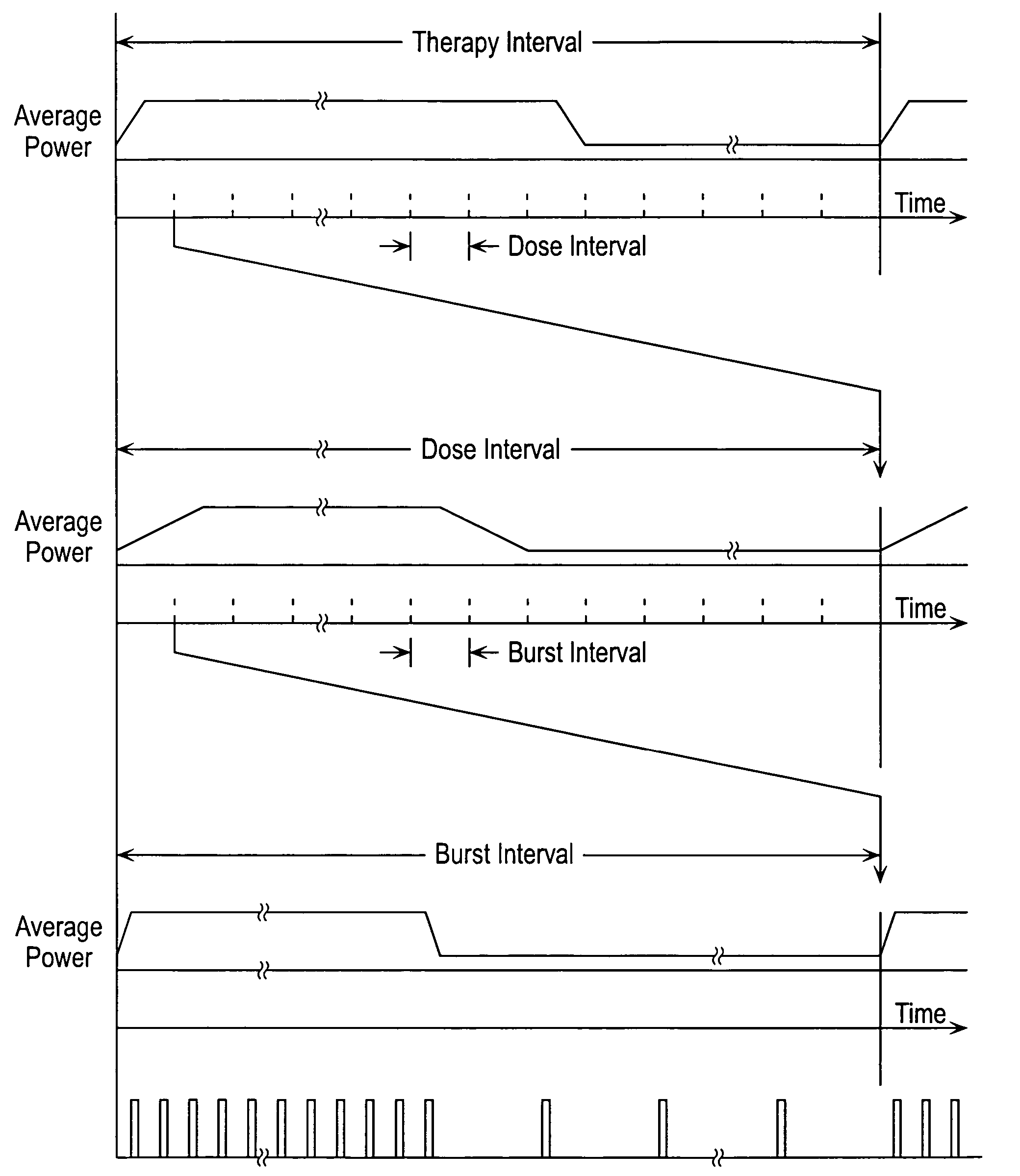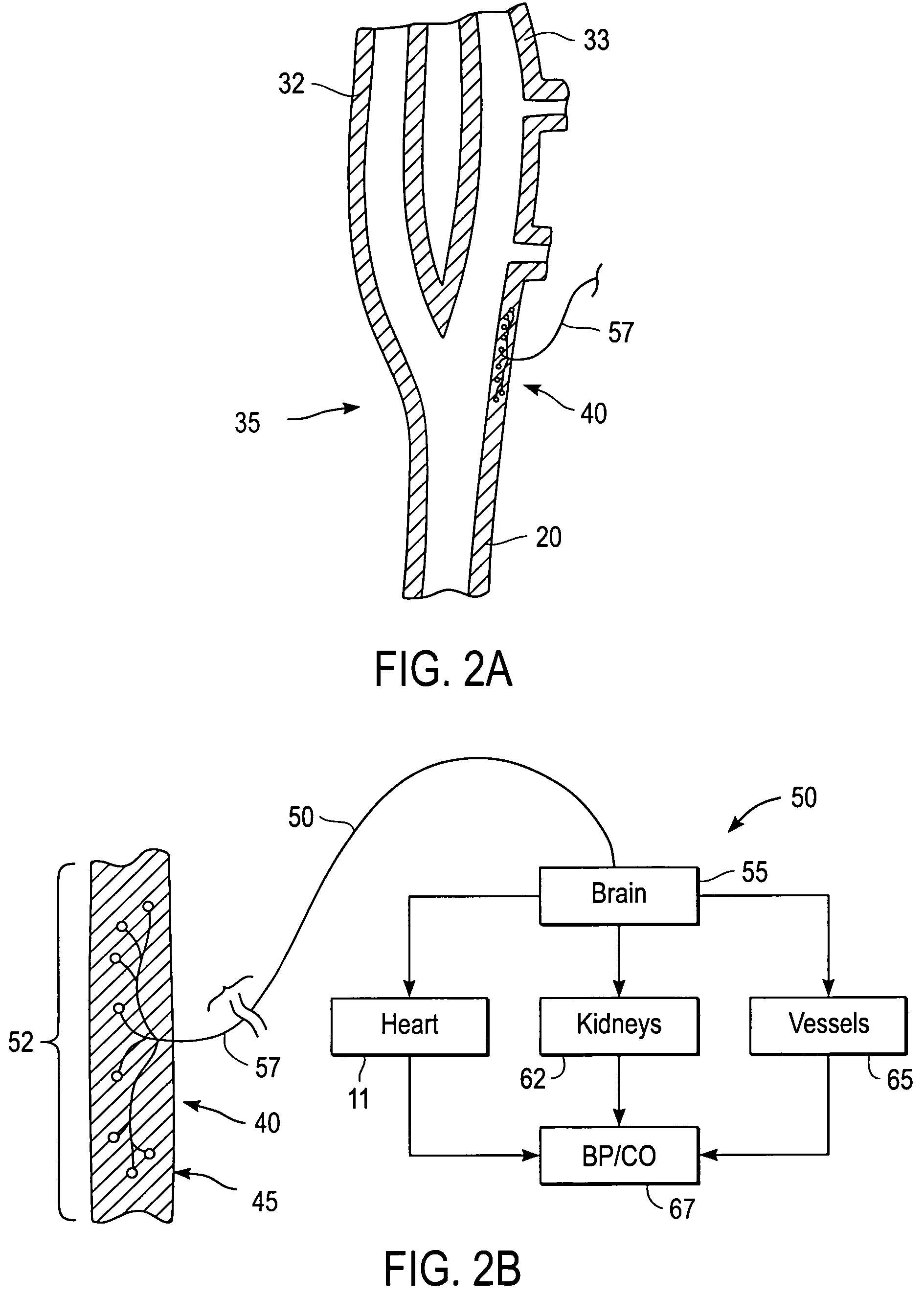Stimulus regimens for cardiovascular reflex control
a stimulus and cardiovascular technology, applied in the field of medical devices, can solve the problems of increased blood pressure, heart failure and stroke, and heart must work harder to maintain blood flow at the higher pressur
- Summary
- Abstract
- Description
- Claims
- Application Information
AI Technical Summary
Benefits of technology
Problems solved by technology
Method used
Image
Examples
Embodiment Construction
[0043]The following detailed description should be read with reference to the drawings in which similar elements in different drawings are numbered the same. The drawings, which are not necessarily to scale, depict illustrative embodiments and are not intended to limit the scope of the invention. The drawings illustrate the specific embodiment where one or more baroreflex activation devices are positioned near baroreceptors, but the invention is applicable to baroreflex activation devices that are positioned near nerve fibers that carry signals from the baroreceptor to the brain.
Anatomical Overview
[0044]To better understand the present invention, it may be useful to explain some of the basic vascular anatomy associated with the cardiovascular system. FIG. 1 is a schematic illustration of the chest and head regions of a human body 10 showing some of the major arteries and veins of the cardiovascular system. The left ventricle of the heart 12 pumps oxygenated blood up into the aortic ...
PUM
 Login to View More
Login to View More Abstract
Description
Claims
Application Information
 Login to View More
Login to View More - R&D
- Intellectual Property
- Life Sciences
- Materials
- Tech Scout
- Unparalleled Data Quality
- Higher Quality Content
- 60% Fewer Hallucinations
Browse by: Latest US Patents, China's latest patents, Technical Efficacy Thesaurus, Application Domain, Technology Topic, Popular Technical Reports.
© 2025 PatSnap. All rights reserved.Legal|Privacy policy|Modern Slavery Act Transparency Statement|Sitemap|About US| Contact US: help@patsnap.com



